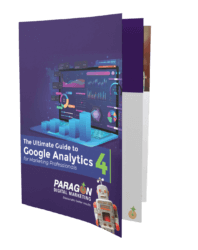3 Things to Know about Blogging for Business
Is Blogging Really a Big Deal?
Whether you’re debating on the merits of blogging, or you simply don’t know where to start, this post is for you. We’ll discuss the benefits of blogging and how to optimize your blog for the search engines. Let’s get started.
What are the Benefits of Blogging?
At first glance, blogging can seem like a waste of time. You’ll invest both time and resources in order to create content for a non-existent audience. So, what’s the point?
The point is that blogging allows you to add value to your customers. As a business, you may use your blog to answer your customer’s frequently asked questions. Your blog can also educate prospects so that they learn more about your product or service and how it serves as the solution to their needs. For current customers, your blog can provide ongoing support and expose them to the other products or services that you offer.
When you blog consistently, you’re able to nurture your customers, no matter where they are in the sales funnel. Through your blog, you can create content that reaches both your prospective and current customers.
Blogging also gives you another opportunity to add value to your email subscribers. Keep them engaged with your business by sharing a link to your latest blog posts and ask for their feedback in the comments.
How Does Blogging Influence Business?
Another benefit to blogging is SEO (Search Engine Optimization) for your business.
Search engines like fresh content. But even more than fresh content, search engines like promoting complete and satisfactory answers to their users. As a small business, you can reach a greater number of people by churning out more and more fresh content. Each blog post creates new opportunities to get found by the search engines.
Not only will producing fresh content enhance your chances of reaching your target audience, fresh content also helps search engine crawlers understand the purpose of your website. Once the search engine crawlers know what your site is about, it’ll be easier for them to decide when to promote your site in the future.
Focusing on known SEO factors, such as page speed and mobile friendliness, can definitely help you rank, but blogging is crucial for actually interacting with and nurturing prospective clients.
Although blogging can improve your website’s visibility in search engine results, we don’t recommend that you blog solely for that reason. Blogging should always be about communicating directly with your prospective and current customers. SEO is a wonderful byproduct of a customer-focused blog.
1. How to Choose the Right Topics for Your Blog

Once you’ve decided to blog, don’t just start randomly creating content. You need to have a solid content marketing strategy in place before publishing posts. If you don’t, you’ll run the risk of speaking to the wrong audience or focusing on the wrong topics.
Not sure how to create a content marketing strategy for your blog? Start here:
Define your target audience personas
Your target audience is your target customer. Many businesses make the mistake of speaking to the wrong audience. They speak to others in the industry, instead of directly to their customers.
When you blog for your business, you should create content for your prospective or current customers.
To determine which content to create, ask yourself and your team these two questions:
- What does my target customer want?
- What type of keywords will my target customer use to search for my product/ service?
Define your sales funnel
Next up, let’s define your sales funnel.
A basic sales funnel looks like this:
Awareness > Interest > Decision > Retention
Another way to look at it may be:
Attract > Educate > Convert > Delight
No matter which sales funnel model you prefer, this much is true: There will always be prospective clients at different stages in your funnel. Some are just now hearing about your business, others are loyal customers. Your blog should cater to every one of your prospective customers, no matter where they are in the funnel.
Ideally, you should create a content strategy for each stage of the buyer’s journey. This way, when prospective clients make a search engine query, they find your blog post answer.
Create beginner friendly content for the awareness level. For interest, delve a little deeper and educate the prospective client on how your product works and why it’s different from the rest. Then, when creating content for decision, add testimonials, reviews, white papers, guarantees, and social proof. Finally, for retention, create tutorials and case studies. All of these things can be done through your blog post.
Create a list of long tail keywords
Once you’ve defined your buyer’s journey and have a good idea of who you’re speaking to, it’s important to create content around the right keywords.
First, make a list of long tail keywords that match what you think your audience will search for. Long tail means specific keyword phrases that are usually longer than two words.
Resist the urge to be too broad or generic with your keywords. Generic terms (such as photographer, therapist, lawyer, florist) are almost impossible to rank for in the search engines, especially in bigger cities. Local search has become more sophisticated with the help of on-page signals such as adding your name, address, and phone number (or NAP for short) to your pages. However, you can’t rely on NAP alone. Creating content around long tail keywords will help you get found more consistently and above your competition.
Research these keywords
Once you’ve made a list of keywords, it’s time to research. Head to Google Keyword Planner. You may find that your initial keyword phrases aren’t actually being searched for. If that’s the case, you’ll need to tweak your keywords accordingly. Fortunately, you can find alternative keyword phrase suggestions on Google Keyword Planner, too.
2. How to Create the Ultimate Answer in Every Blog Post
You’ve defined the audience. You’ve nailed down the keywords. Now, it’s time to craft an effective blog post. What do you need to know?
The most important thing to keep in mind is this: Every blog post you write should be the ultimate answer to the user’s query. The user shouldn’t need to go to another blog post to supplement the answer. Of course, your blog post may stir up new questions, but it should also fully answer the question at hand.
For this reason, blog posts should be a minimum of 1,000 words in length. Longer blog posts rank higher on search engines because they indicate a thorough answer. One or two paragraphs is simply not enough to fully answer a search engine user’s question.
Every blog post should also have the following:
- Keyword-rich title – In the title of your blog, include your targeted keywords.
- Keyword-rich URL – Your URL (your page’s web address) should also contain your chosen keywords.
- Meta description – Insert your chosen keywords into the page description. Keep in mind that your crafted meta description may not be shown on the search engine results page. Sometimes, search engines display the text around the user’s queried keywords to provide context.
- Headings – Separate your blog post into smaller sections with a mini-title (or header). These headers help crawlers understand what your page is about.
- Internal links – Another way to provide a big picture for web crawlers is to link to other pages on your site. In your blog post, look for opportunities to link to related pages. One of the best places to do this is at the end of your post, as a call to action. This will also reduce your bounce rate, which affects SEO.
3. How to Promote Your Blog Posts

Blog posts don’t promote themselves. Fortunately, post promotion isn’t hard to do.
There are two ways to promote posts: Paid and Free.
To get maximum coverage, you can pay to promote a specific blog post. I’d recommend only promoting posts that you’re especially proud of and that you think will provide the most opportunities to convert leads into customers. If you do opt for paid promotion, consider Facebook. Facebook marketing allows you to zero in on a very specific audience. You can target your previous clients, people who’ve visited your site within the last month, or people who share similarities to your current clients.
Although paid promotion is often more effective, you can also benefit from organic promotion. Promote your blog posts on your social media channels. Reach out specifically to influencers and ask them to share your posts with their social circles. You can also promote your blog posts to your email subscribers each time you publish, or as a monthly roundup.
When you generate traffic to a blog post, you can positively impact your page’s ranking on the search engines. Page popularity can often send a signal to crawlers that your blog post is relevant and worthy of promotion.
Final Thoughts
Blogging is a crucial part of building your business. Not only does consistent blogging answer customer’s frequently asked questions, educate prospects and support current customers, but you’re also providing fresh content for search engines. Your blog gives you more opportunities to get found by prospective clients. Start your blog right away with these tips.
Additional Resources
Before you go, check out these related posts:












